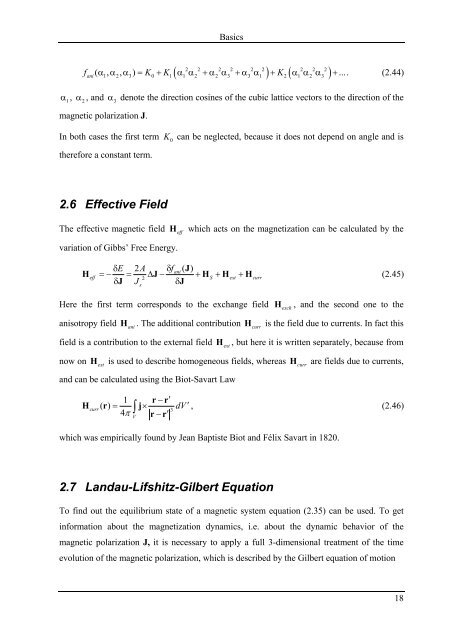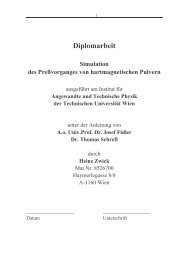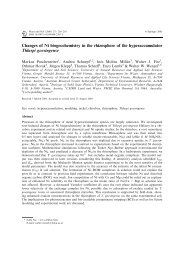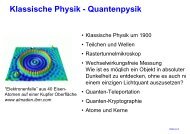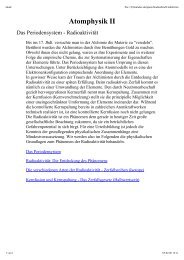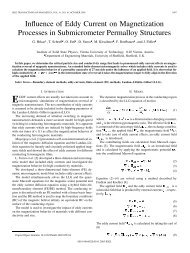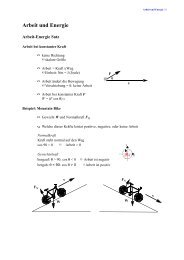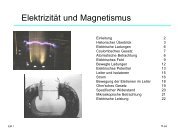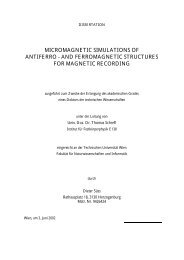Read Back Signals in Magnetic Recording - Research Group Fidler
Read Back Signals in Magnetic Recording - Research Group Fidler
Read Back Signals in Magnetic Recording - Research Group Fidler
Create successful ePaper yourself
Turn your PDF publications into a flip-book with our unique Google optimized e-Paper software.
Basics<br />
2 2 2 2 2 2 2 2 2<br />
( ) ( )<br />
f ( α , α , α ) = K + K α α +α α +α α + K α α α + ... . (2.44)<br />
ani<br />
1 2 3 0 1 1 2 2 3 3 1 2 1 2 3<br />
α 1 , 2 α , and α 3 denote the direction cos<strong>in</strong>es of the cubic lattice vectors to the direction of the<br />
magnetic polarization J.<br />
In both cases the first term K 0 can be neglected, because it does not depend on angle and is<br />
therefore a constant term.<br />
2.6 Effective Field<br />
The effective magnetic field H eff which acts on the magnetization can be calculated by the<br />
variation of Gibbs’ Free Energy.<br />
δE<br />
2A δfani<br />
( J)<br />
H =− = ΔJ− + H + H + H<br />
eff 2<br />
S ext curr<br />
δJ J s δJ<br />
(2.45)<br />
Here the first term corresponds to the exchange field H exch , and the second one to the<br />
anisotropy field H ani . The additional contribution H curr is the field due to currents. In fact this<br />
field is a contribution to the external field H ext , but here it is written separately, because from<br />
now on ext H is used to describe homogeneous fields, whereas H curr are fields due to currents,<br />
and can be calculated us<strong>in</strong>g the Biot-Savart Law<br />
1 r−r′ Hcurr () r = ×<br />
4π<br />
∫ j<br />
r−r′ V<br />
3<br />
dV ′ , (2.46)<br />
which was empirically found by Jean Baptiste Biot and Félix Savart <strong>in</strong> 1820.<br />
2.7 Landau-Lifshitz-Gilbert Equation<br />
To f<strong>in</strong>d out the equilibrium state of a magnetic system equation (2.35) can be used. To get<br />
<strong>in</strong>formation about the magnetization dynamics, i.e. about the dynamic behavior of the<br />
magnetic polarization J, it is necessary to apply a full 3-dimensional treatment of the time<br />
evolution of the magnetic polarization, which is described by the Gilbert equation of motion<br />
18


